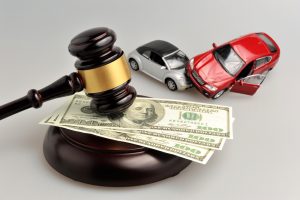How To Get The Compensation You Deserve After A Car Accident
 Car accidents can have consequences that extend far beyond the inconvenience of filing an insurance claim or taking time away from work. For many survivors, moving past a collision is anything but straightforward—it can be time-consuming, and is often reliant on decisions and negotiations that seem to prioritize corporate profits over their well-being.
Car accidents can have consequences that extend far beyond the inconvenience of filing an insurance claim or taking time away from work. For many survivors, moving past a collision is anything but straightforward—it can be time-consuming, and is often reliant on decisions and negotiations that seem to prioritize corporate profits over their well-being.
The Limitations Of No-Fault Insurance
New York’s no-fault insurance system can, in most cases, guarantee the repayment of certain accident-related expenses. However, these benefits are subject to stringent limitations, which are determined both by the details of your policy and by statutory caps defined by the state legislature. Assistance is not unconditional, and it may well come to an abrupt end before injuries heal and emotional trauma subsides.
But, where insurance policies sometimes fall short, accident victims who have suffered serious injuries or extensive financial losses often have other options. If, for example, another motorist caused your crash, they could be liable for any resulting expenses.
Filing a personal injury lawsuit can provide a better opportunity to obtain compensation—provided that you come prepared, and that you know what to expect in insurance negotiations and court.
The Four Essential Elements Of A Personal Injury Claim
Every personal injury lawsuit is different, but an accident victim who files a claim—the plaintiff—must typically establish the following:
- The at-fault motorist owed the accident victim a duty of care. A duty of care, in this context, is a legal term referring to the at-fault driver’s responsibility to operate a vehicle reasonably and in accordance with state law;
- The at-fault driver breached their duty of care by acting negligently;
- The at-fault driver’s negligence caused the victim’s injuries; and
- The victim sustained losses, or damages, compensable by a New York court.
Three Tips To Protect Your Claim In Settlement Negotiations And Court
If you were injured in an accident that was not your fault, establishing the elements of a personal injury claim might seem simple. However, when large amounts of money are on the line, insurance companies and negligent drivers alike have a strong incentive to push back—even if pushing back entails misreading evidence, or using your own words against you to craft a very different account of events.
You can, fortunately, take several steps to pre-empt these seemingly unfair negotiation strategies and defense tactics. These include the following:
- Seeking Medical Attention: You should always see the doctor after a car accident, even if you do not believe that you have sustained serious injuries. A close examination can reveal “invisible” injuries—such as a concussion, or internal bleeding—and create a paper trail that could prevent adjusters and defense attorneys from claiming that you are exaggerating your symptoms.
- Preserving Evidence: If you can safely remain at the crash site, try to collect and preserve any evidence relevant to your claim. Evidence could include a picture of your injury, a video walk-around of your damaged vehicle, and a photograph of any dangerous conditions that may have contributed to the accident.
- Speaking to Eyewitnesses: Eyewitness testimony can play a critical role in negotiations and trial. If somebody else saw your accident, ask them for their full name and phone number.
Before filing a claim, always schedule a consultation with an experienced New York car crash lawyer. Even if you do not think you need an attorney, a lawyer could help you better assess your chances of success, provide a more accurate assessment of your damages, and assist you in obtaining the evidence needed to secure a fair settlement.
 Buffalo Personal Injury Lawyer News
Buffalo Personal Injury Lawyer News

